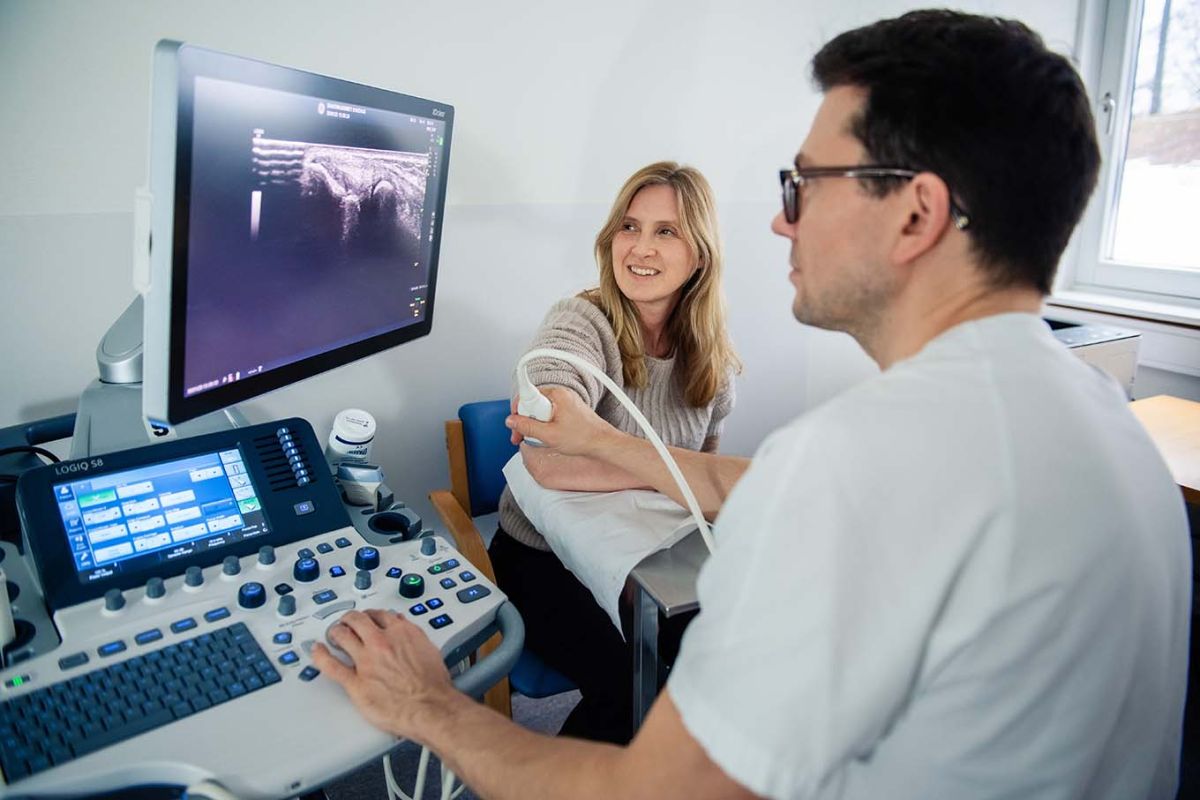How to recognize psoriatic arthritis

Many people know psoriasis as a skin disease, but it can also affect the joints. About one in ten people with psoriasis develop psoriatic arthritis, which causes pain, swelling and stiffness in the joints. Today we mark World Psoriasis Day.
Can close follow-up provide better results?
The NOR-SPRINT study follows patients over two years
Senior consultant in rheumatology at Diakonhjemmet Hospital, Even Lillejordet, says that they are recruiting patients with psoriatic arthritis for the NOR-SPRINT study.
Patients are referred from outpatient clinics at 12 hospitals in Norway when they are about to start their first medical treatment for the disease.
The study is part of Lillejordet's doctoral work at the REMEDY Center.
– We want to find out if close follow-up gives better treatment effects for patients. We use MRI and ultrasound before and during treatment and follow clear goals for how the treatment should work over two years, explains Lillejordet.
So far, 160 of 202 patients are participating in NOR-SPRINT.
Prevalence and cause
Psoriatic arthritis occurs in approximately 10 percent of people with the skin disease psoriasis, but figures from different studies vary considerably.
– Significant amounts of psoriasis on the skin, nail psoriasis and obesity increase the risk of developing psoriatic arthritis. The causes are poorly understood, but the disease is to some extent hereditary, explains the rheumatologist.
International studies show that about as many women as men get psoriatic arthritis.
– Among NOR-SPRINT's first 111 participants, 64 percent were men, says Lillejordet.
Symptoms
In NOR-SPRINT, 80 percent of participants had swollen joints when they started the study.
Some also get inflammation in the back or pelvis. They may have pain and stiffness in the lower back, sometimes further up the back or in front of the breastbone. The pain is often worst at night, and it usually helps to move more.
Psoriatic arthritis can also cause inflammation where tendons attach to bones, for example under or behind the heel. This is called enthesitis.
– 30 percent of the patients in NOR-SPRINT have had this, says Lillejordet.
Another typical sign is that an entire finger or toe becomes swollen like a sausage.
– This is called dactylitis and was found in 38 percent of the participants in NOR-SPRINT, he says.
He says that you can have several of these symptoms at the same time. They can also vary and come and go over time.
Additional diseases
Psoriasis and psoriatic arthritis can also cause other health problems, such as cardiovascular disease, osteoporosis, and fatigue. Therefore, it is important for both patients and healthcare professionals to monitor their overall health, not just the skin or joints.
Exercise can reduce pain and stiffness, strengthen muscles and joints, and contribute to better energy and quality of life. Many people find that movement helps more than rest.
The goal is to find treatment that suppresses the disease early and prevents complications.
– Detecting the disease early, getting the right treatment and being physically active regularly can make a big difference in everyday life, he says.
He encourages you to contact your GP if you experience symptoms beyond skin problems, such as painful or swollen joints, back pain at night or severe fatigue.
“Knowledge and attention mean that more people can get better help in a timely manner,” emphasizes senior rheumatologist Even Lillejordet.





